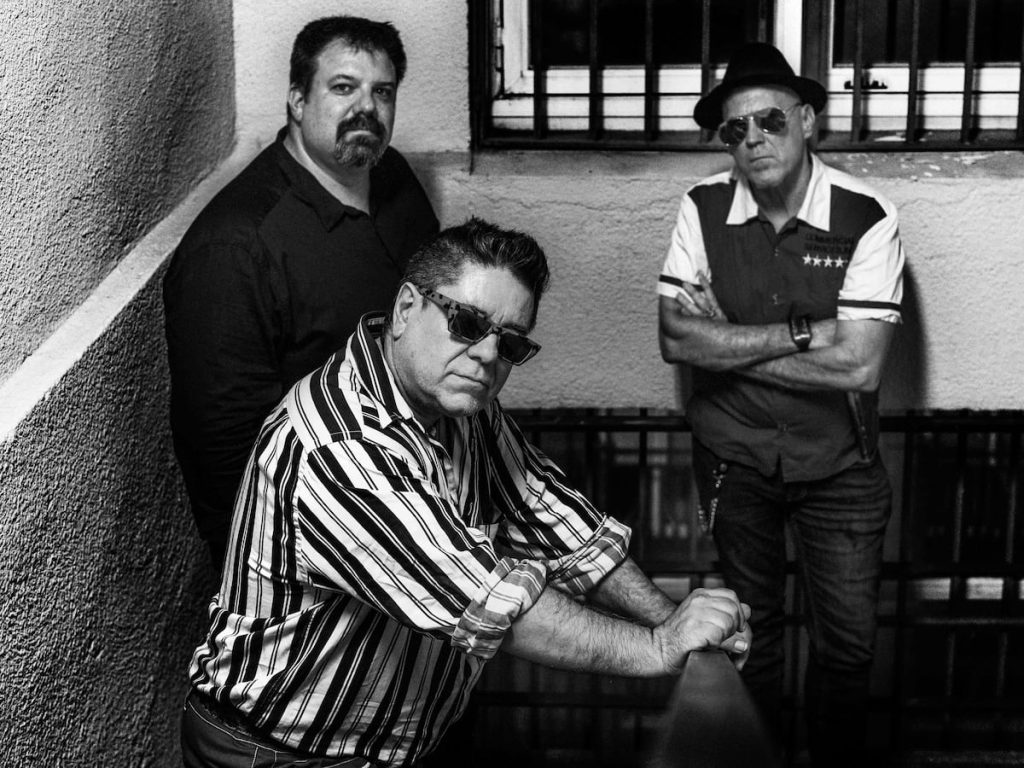In New Orleans (USA) there is Talavera pottery. The set of plates, installed in 1957, recalls the names that the streets of the city had centuries ago. The cultural legacy of New Orleans, as the birthplace of jazz and rhythm & blues, reaches all corners of the world, including Talavera. The swampy sound of the band Lobos Negros, born in the Castilian city of Talavera de la Reina, continues to thrive 40 years after its founding. The band’s lead singer, guitarist, and only constant member throughout its trajectory, Luis Martín, speaks about their journey as if they were just starting out. The band is celebrating their four-decade anniversary with a new album, “La Ruta de la Plata,” set to be released in September, and a tour that includes dates in Latin America for 2025.
Maintaining a passion for music and rock & roll above all is essential, according to Martín, who is also a sociologist, actor, inventor of the world’s first ceramic electroacoustic guitar, and a brown belt in karate. Despite facing opposition from his conservative father, who owned a prominent local hat shop, Martín was able to establish Lobos Negros in 1984. The band’s music, which falls under the psychobilly genre, is influenced by bands like Meteors and Cramps. Martín emphasizes the importance of having a diverse musical taste when forming a band, as it provides a wide range of influences to draw from. His dedication to music has enabled him to make a living from it, in addition to occasional work for SGAE, cultural projects, and appearances in films and series.
Lobos Negros, with their constant references to Talavera throughout their discography, released a song in 2014 titled “Soy el hombre de la guitarra de cerámica,” recorded with a ceramic guitar patented by Martín. The idea for the guitar came from Víctor Aparicio, who designed the cover of Martín’s book about the early days of pop and rock in Talavera. The ceramic guitar, now exhibited in Talavera de la Reina’s La Milagrosa Social Center, intrigued musicians like Carlos Santana, who expressed interest in acquiring one. Despite facing challenges in perfecting the instrument due to its fragility, Martín remains determined to enhance its design and sound. Martín’s involvement in a music program at Valdemoro prison, where he formed a band with inmates called Cal Viva, was a rewarding experience that he plans to continue in the future.
In addition to his musical endeavors, Martín has also ventured into the world of film and television, collaborating with director Álex de la Iglesia on various projects. His cameos in de la Iglesia’s productions have become something of an inside joke, with Martín appearing in different roles in films and series. Martín’s eclectic background and diverse interests have helped shape his artistic career, allowing him to explore various creative avenues. As he prepares to release a new album and a documentary exploring his musical journey, Martín reflects on the enduring appeal of myths and legends in the music industry, where success can be fleeting but the stories live on. His ongoing passion for music and dedication to his craft serve as a testament to the resilience and creativity of artists like himself who continue to make their mark in the industry.


